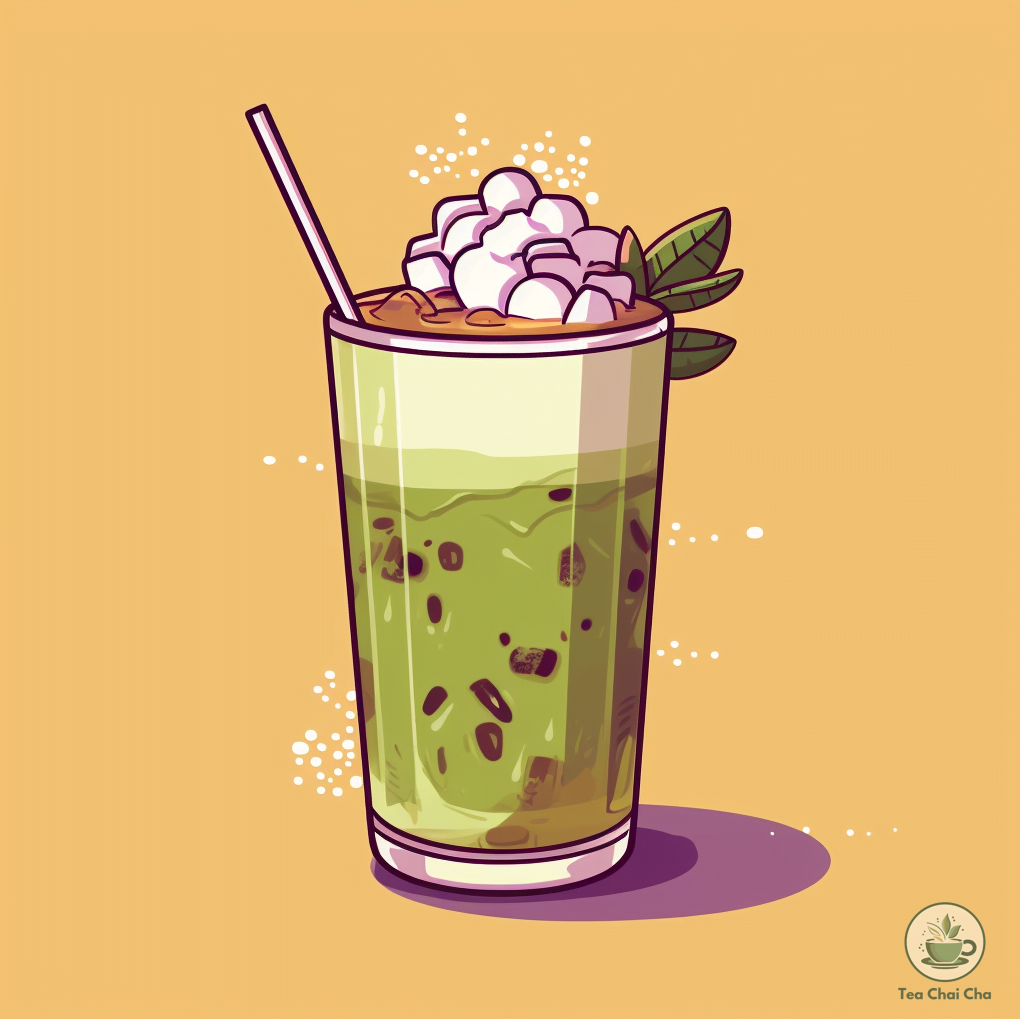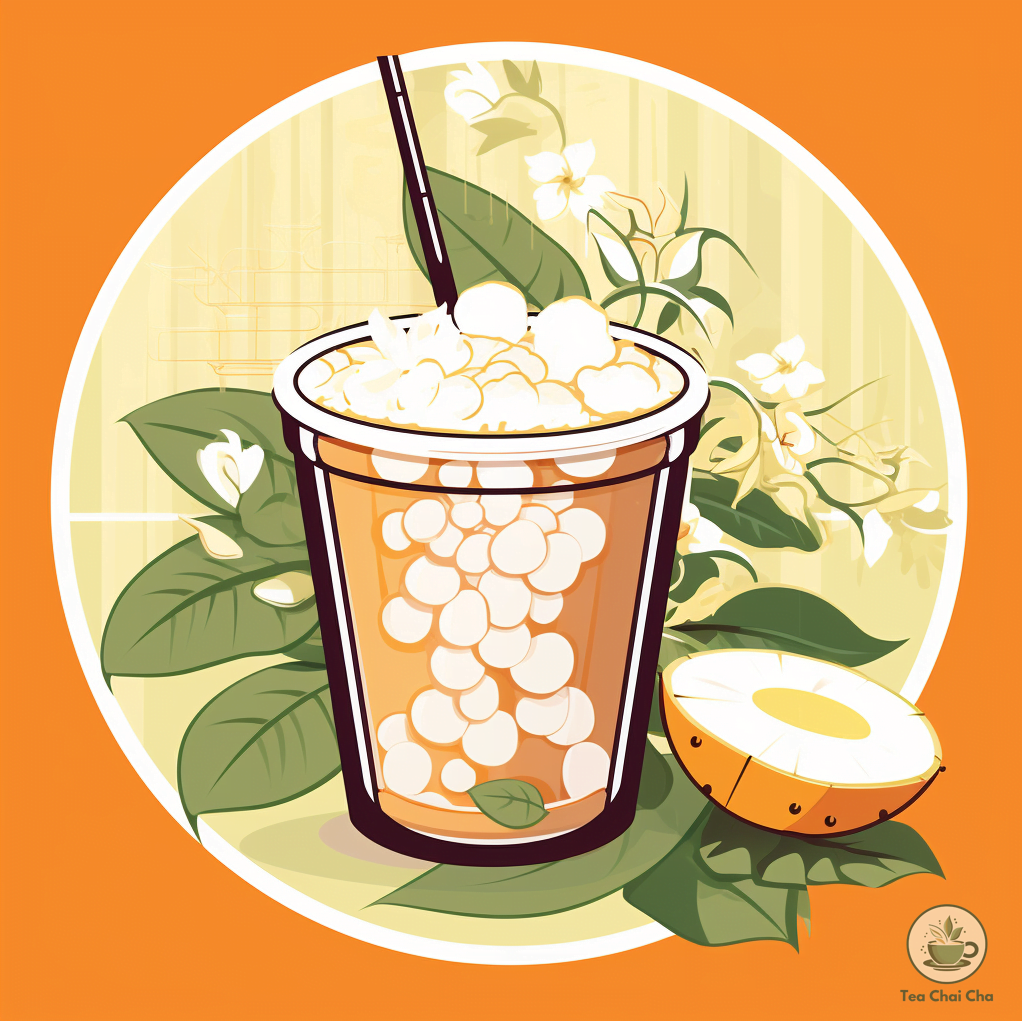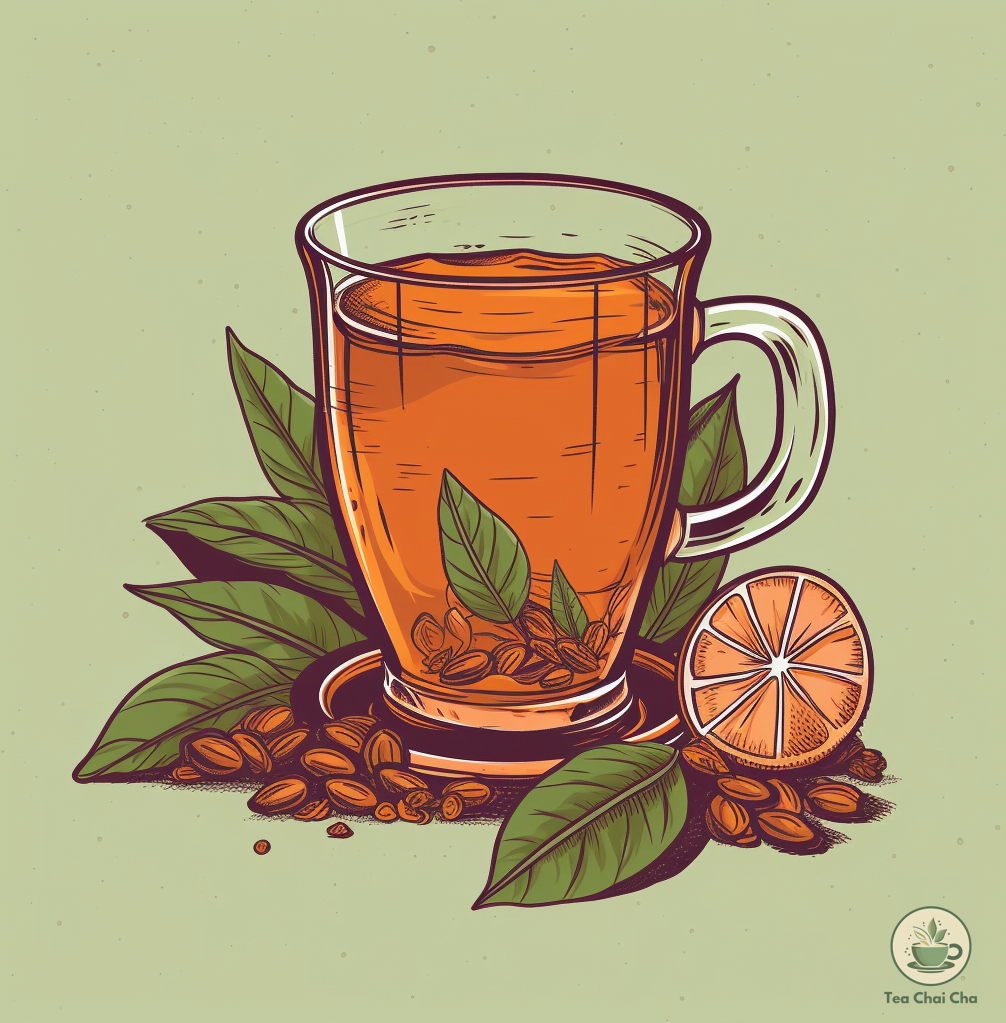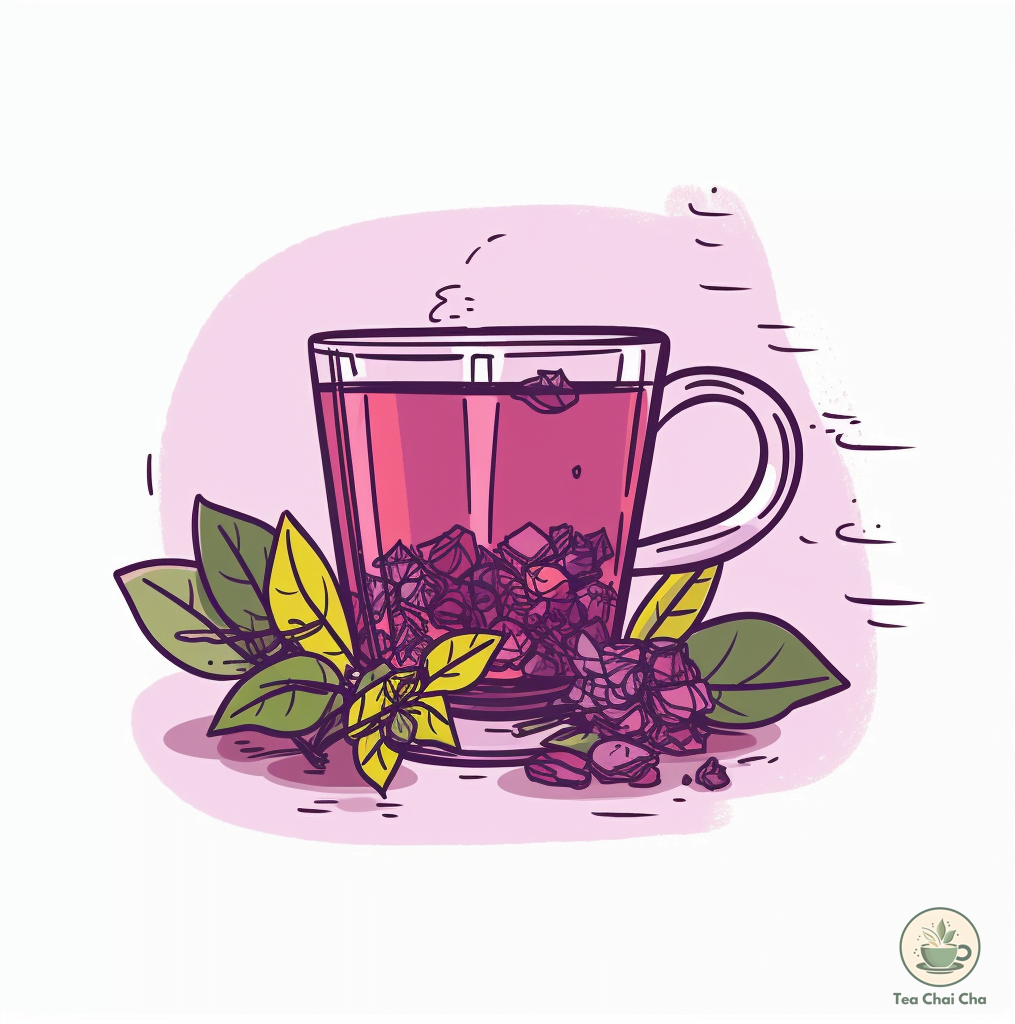Did you know that the taste of your favorite cup of tea is influenced by more than just the tea leaves? In this article, we’ll delve into the fascinating relationship between geography and tea production and discover famous tea-producing regions worldwide.
From the mist-shrouded mountains of China to the sprawling tea estates of India and beyond, we’ll explore how different elements of geography shape the teas we savor.
Importance of Geography in Tea Production
Geography plays a crucial role in tea production, shaping the unique flavors and characteristics of each tea. Let’s take a closer look at the key factors:
- Climate: The temperature, rainfall, and seasonal variations contribute to the unique flavors and characteristics of tea. Each tea-growing region has its own microclimate, resulting in distinctive taste profiles.
- Altitude: Tea plants thrive at different altitudes, and this elevation affects the growth rate and flavor development of tea leaves. High-altitude teas often exhibit delicate and nuanced flavors.
- Soil Composition: The minerals and nutrients present in the soil interact with the tea plant’s roots, influencing its health and the flavors imparted to the leaves. Different soil types contribute to the complexity of teas.
Overview of Prominent Tea Growing Regions/Countries
Let’s now explore some of the world’s prominent tea-producing countries, each with its own unique tea traditions and contributions to the global tea landscape:
China
China, the world’s largest tea growing region, offers a diverse range of teas that reflect its rich history and traditions. Key highlights include:
- Famous tea growing regions: Yunnan, Anhui, Fujian, and more
- Tea types: Green tea, black tea, oolong tea, and Pu-erh tea
- Notable teas: Longjing (Dragon Well), Tie Guan Yin (Iron Goddess), and Pu-erh
India
India boasts a vibrant tea culture and produces some of the world’s finest teas. Let’s explore:
- Prominent tea growing regions: Assam, Darjeeling, Nilgiri, and more
- Tea types: Assam black tea, Darjeeling black tea, and Nilgiri black tea
- Notable teas: Assam CTC, Darjeeling first flush, and Darjeeling second flush
Japan
Japan’s tea traditions are deeply rooted in its culture, offering a unique tea-drinking experience. Here’s what you need to know:
- Renowned tea growing regions: Uji, Shizuoka, Kagoshima, and more
- Tea types: Matcha (powdered green tea), Sencha, Gyokuro, and Hojicha
- Notable teas: Uji Matcha, Gyokuro shaded green tea, and Sencha
Unveiling the Rich Tapestry of Chinese Tea Culture
Chinese tea culture dates back thousands of years and holds a profound place in the hearts and minds of the Chinese people. It is not simply about sipping a beverage but rather a harmonious way of life, a cherished art form, and a means of connecting with nature.
Chinese tea ceremonies, steeped in tradition and mindfulness, reflect the reverence and respect for tea that permeates every aspect of Chinese culture.
Chinese tea culture embraces the concept of “Cha Dao,” the way of tea, which encompasses the philosophy, preparation, and appreciation of tea. It emphasizes the importance of harmony, tranquility, and the sharing of tea as a gesture of hospitality and friendship.
Now, let’s journey deeper into the captivating regions of Yunnan and Anhui to discover the treasures they hold within the world of Chinese tea.
The Birthplace of Tea: Yunnan Province
Nestled in the southwestern part of China, Yunnan Province is believed to be the birthplace of tea. Its lush mountains, fertile soil, and ideal climate have nurtured tea trees for centuries, giving rise to exceptional teas that captivate the senses and tell tales of ancient tea traditions.
Tea Trees and Historical Significance
Yunnan is home to some of the oldest tea trees on Earth, with a heritage that stretches back millennia. These ancient tea trees, some reaching heights of over 30 feet, have witnessed the evolution of tea culture and stand as living testaments to the deep-rooted significance of tea in Yunnan’s history.
Renowned Teas from Yunnan
Yunnan’s tea offerings are diverse and celebrated for their unique flavors and characteristics:
- Pu-erh Tea: Pu-erh, a distinctive post-fermented tea, holds a special place in Yunnan’s tea culture. It undergoes an aging process that can span years or even decades, resulting in a remarkable depth of flavor, smoothness, and potential for further maturation.
- Dianhong Black Tea: Dianhong, also known as Yunnan black tea, is renowned for its golden buds and malty taste. This exquisite tea showcases the skillful craftsmanship of Yunnan tea producers and offers a bold and robust flavor experience.
Unique Cultivation and Processing Techniques
Yunnan’s tea production is characterized by its unique cultivation and processing methods:
- Sun-Drying: Yunnan teas often embrace the traditional method of sun-drying, allowing the tea leaves to gently wither and dry under the warmth of the sun. This natural process preserves the tea’s intrinsic flavors, aromas, and vitality.
- Aging Pu-erh Tea: Yunnan’s Pu-erh teas are highly regarded for their aging potential. These teas are carefully stored and undergo microbial fermentation over time, resulting in unparalleled complexity, smoothness, and transformative qualities.
The Green Tea Haven: Anhui Province
Situated in eastern China, Anhui Province is a verdant paradise for green tea lovers. Its picturesque landscapes, favorable climate, and meticulous tea cultivation practices contribute to the creation of outstanding green teas that enchant tea connoisseurs worldwide.
Prominent Green Teas from Anhui
Anhui Province is renowned for its exceptional green teas, each with its own distinct personality and flavor profile:
- Huangshan Maofeng: Grown on the mist-shrouded peaks of Huangshan Mountain, Huangshan Maofeng is a delicate and highly sought-after green tea. Its name, meaning “Fur Peak,” reflects the downy appearance of its leaves. This tea captivates with its delicate aroma, refreshing taste, and exquisite, tightly curled leaves.
- Keemun Black Tea: While Anhui is primarily known for its green teas, it has also made its mark in the black tea realm with the famous Keemun. This black tea delights with its floral fragrance, smooth texture, and distinct wine-like richness that sets it apart from other black teas.
Traditional Tea Processing Methods
Anhui’s tea production is steeped in tradition, with a focus on preserving the natural flavors and visual aesthetics of the tea leaves:
- Pan-Firing Technique: Anhui teas often undergo a meticulous pan-firing process. Skilled tea artisans carefully heat the leaves in large woks, applying just the right amount of heat to maintain the tea’s vibrant green color and impart a unique flavor profile.
- Hand-Rolling: The art of hand-rolling tea leaves is a cherished tradition in Anhui Province. Experienced tea masters skillfully shape the leaves into elegant curls or twists, enhancing both the visual appeal and the texture of the tea.

Also read – Tea Types: An In-Depth Look
Journey Through the Tea Gardens of India
India, with its diverse regions and favorable climate, has emerged as one of the world’s largest producers of tea. Tea gardens, spread across picturesque hills and valleys, paint a breathtaking landscape and play an integral role in India’s rich tea heritage.
From the robust black teas of Assam to the delicate flavors of Darjeeling, these gardens hold the secrets to some of the world’s most esteemed teas.
The Heart of Black Tea: Assam
Nestled in the northeastern corner of India, Assam’s lush tea gardens and unique climate have given birth to some of the most robust teas in the world.
Assam Tea: Bold and Brisk
Assam’s teas are celebrated for their distinct characteristics and full-bodied flavor. Here’s what makes them special:
- Assam Black Tea: This tea is well-known for its robust, malty flavor, bright color, and strong aroma. Derived from the Camellia sinensis var. assamica plant, native to this region, Assam tea leaves are larger and yield a potent brew perfect for awakening the senses.
Assam Tea Processing Technique: Crush, Tear, Curl
Assam’s unique tea processing technique further intensifies the flavors and character of its tea:
- Crush, Tear, Curl (CTC): Unlike the orthodox method of tea processing, the CTC method involves crushing the tea leaves and curling them into small pellets. This technique accelerates oxidation and gives Assam teas their bold, brisk flavor profile.
Land of Exquisite Teas: Darjeeling
Darjeeling, often dubbed the “Champagne of teas,” offers an unrivaled combination of unique flavor profiles and breathtaking tea landscapes.
Darjeeling Tea: A Prized Delicacy
Darjeeling tea is prized for its delicate flavor, aroma, and the beautiful amber color it imparts when brewed. Here’s a closer look:
- Darjeeling Tea: This tea is often characterized by its muscatel flavor – a unique grape-like taste, floral aroma, and a hint of astringency. The teas are harvested in different seasons, or “flushes,” each producing teas with distinctive qualities.
Art of Producing Flush Teas in Darjeeling
Producing Darjeeling tea is an intricate process, tied to the cycles of nature:
- First Flush: The first harvest of the season, the first flush, is plucked in early spring. The resulting tea is light, delicate, and highly aromatic.
- Second Flush: Harvested in late spring, the second flush yields a darker, full-bodied tea with the much-loved muscatel flavor.
- Autumnal Flush: The autumnal flush teas, harvested post-monsoon, offer a robust and darker brew, prized for its full-bodied and rounded flavor.

Tea Traditions of Japan
In Japan, tea is not just a beverage; it is a way of life, an art form, and a reflection of the country’s deep-rooted cultural traditions. Japanese tea traditions have been honed over centuries, embodying a deep respect for nature, mindfulness, and inner harmony.
Each cup of tea is an invitation to find tranquility and savor the present moment. So, let us embark on this enlightening journey through the remarkable tea traditions of Japan, where every sip reveals a world of beauty and contemplation.
Uji: The Cradle of Japanese Tea
Nestled amidst the tranquil landscapes on the outskirts of the ancient city of Kyoto, Uji remains etched in the annals of tea history. Renowned for its significant impact on the Japanese tea ceremony, Uji beautifully weaves together an art form that’s an amalgamation of mindfulness, respect, and the simple pleasure of enjoying tea.
Celebrating the Renowned Teas of Uji
Uji’s unique climate and fertile landscapes give birth to a couple of Japan’s most iconic teas. Each tea type is a testament to the region’s unrelenting commitment to excellence in tea cultivation:
- Matcha: The cornerstone of the Japanese tea ceremony, Matcha is a finely ground powder derived from specially-grown and processed green tea leaves. Its vibrant color, profound taste, and frothy texture make it an unparalleled treasure in the tea world.
- Gyokuro: Standing tall as the pinnacle of Japanese green teas, Gyokuro is highly cherished for its exquisite, noble, and sweet flavor. Its cultivation involves a careful process of shading the tea bushes weeks before harvest, leading to a heightened level of amino acids and a rich, umami flavor.
Unique Tea Cultivation Practices in Uji
Uji’s approach to tea cultivation marries tradition with innovation, creating techniques that deeply influence the flavor and quality of the teas:
- Kabuse Technique: Embracing the art of “shadowing”, Uji’s tea farmers cover their tea plants for several weeks before harvest. This technique increases the leaves’ chlorophyll content, lending a sweeter, more nuanced flavor to the tea.
- Stone Grinding: Preserving the wisdom of their ancestors, Uji’s tea artisans continue the practice of stone grinding. This traditional method helps retain the nutritional benefits of the tea leaves, giving Matcha its characteristic fine texture and vibrancy.
Shizuoka: Japan’s Largest Tea Producing Area
Nestled in the heart of Japan is Shizuoka, a picturesque region that holds the honor of being the nation’s largest tea producer. The historical connection of Shizuoka with tea production goes back centuries, deeply influencing its contemporary tea culture.
Popular Teas from Shizuoka
Shizuoka’s fertile soils and optimal climate nourish a wide variety of teas, with two being particularly prominent:
- Sencha: A perfect balance of sweetness and mild astringency makes Sencha a favored everyday tea in many Japanese homes. The tea leaves, harvested in the first and second flush, are gently steamed and rolled to preserve their color and aroma.
- Fukamushi Sencha: A variant of Sencha, Fukamushi Sencha undergoes a longer steaming process. This method breaks down the tea leaves further, resulting in a full-bodied flavor, beautiful deep green color, and quick infusion time.
Tracing the Deep Steaming Method in Shizuoka
Shizuoka stands out with its unique approach to tea processing:
- Fukamushi Technique: Shizuoka’s tea artisans pioneered the Fukamushi, or deep-steaming technique. This innovative method, while modern, has quickly become part of the region’s tea tradition, enriching the character of Shizuoka’s Sencha by yielding a more intense flavor and vivid color.
Kyoto: Cultural Hub of Japanese Tea
Allow us to guide you through the vibrant cityscape of Kyoto, a place where time-honored tea traditions come alive against a backdrop of historic temples and shrines. Kyoto’s significance in the world of tea extends far beyond its borders, deeply rooted in the famed Japanese tea ceremony, or “Chanoyu.”
Tea Icons of Kyoto
Kyoto’s tea journey is marked by the distinctive flavors of its iconic teas, each reflecting the spirit of the region’s deep-rooted tea culture:
- Ujicha: Primarily produced in Uji, which is a part of Kyoto Prefecture, Ujicha is synonymous with high-quality Japanese green tea. It exhibits a range of flavors and aroma profiles, each influenced by the meticulous and specific processing methods employed.
- Gyokuro: Kyoto’s prized Gyokuro shares its fame with Uji, loved for its sweet, smooth, and umami-rich character. Shaded for several weeks before harvest, Gyokuro is the embodiment of Kyoto’s patient pursuit of excellence in tea cultivation.
Kyoto’s Meticulous Tea Processing Methods
The artisanal skills of Kyoto’s tea craftsmen are reflected in their time-honored processing techniques:
- Shading Techniques: Similar to Uji, tea farmers in Kyoto often employ shading methods for teas like Gyokuro and Matcha. This process not only influences the tea’s flavor but also its nutritional profile, enhancing its sweetness and umami flavors.
- Hand Rolling: Some Kyoto tea farms still uphold the tradition of hand rolling tea leaves. This labor-intensive technique shapes the tea, contributing to its final taste and aesthetic quality.
Also read – The History of Tea

Unique Tea Production of Taiwan
Let’s venture across the East China Sea to explore the lush, high mountain ranges of Taiwan, a place where the art of tea production takes on a character uniquely its own.
High Mountain Oolongs: Nantou County
Nestled within Taiwan’s verdant landscapes is Nantou County, a region that has risen to become a significant player in the country’s tea industry, primarily due to its High Mountain Oolongs.
Taiwan’s Pride: High Mountain Oolong Teas
Nantou County’s tea fame largely rests on its High Mountain Oolong teas, offering a tea experience that is truly exceptional:
- High Mountain Oolong: This tea category is grown at elevations of over 1000 meters. The high altitude, combined with the region’s unique climate, imparts a distinct sweetness and complexity to these teas, setting them apart on the global tea stage.
Taiwan’s Unique Tea Oxidation and Roasting Processes
Taiwan’s tea production shines in its unique approach to oxidation and roasting, two critical stages in Oolong tea production:
- Controlled Oxidation: Taiwanese tea producers masterfully control the oxidation levels of their Oolong teas, ranging from lightly oxidized to heavily oxidized. This precision significantly impacts the flavor, aroma, and color of the final tea.
- Roasting Process: Some Taiwanese Oolongs undergo a roasting process. This additional step can add a layer of depth and complexity to the tea, resulting in notes of caramel, toast, and ripe fruit.
Alishan: Jewel of Taiwanese Tea
In the mountainous terrains of Taiwan, Alishan stands tall and proud, its scenic tea plantations producing some of the country’s most celebrated Oolong teas.
Alishan’s High-Quality Oolong Teas
Renowned for its high altitude and fertile soils, Alishan’s terroir bestows its Oolong teas with distinctive and aromatic profiles:
- Alishan Oolong: Renowned for their creamy texture, floral notes, and sweet aftertaste, these teas are often lightly oxidized and gently roasted, resulting in a captivating tea experience.
Unique Tea Harvesting and Processing Methods of Alishan
At the heart of Alishan’s tea production lies its commitment to quality and tradition, which is evident in its unique tea harvesting and processing methods:
- Hand-picking: Alishan’s tea leaves are often hand-picked, ensuring only the highest quality leaves make it to the processing stage.
- Precision Roasting: Many Alishan Oolongs undergo a precise roasting process. This helps to enhance the natural flavors of the tea, adding a layer of complexity to its overall profile.

Journey to the Vibrant Tea Gardens of Sri Lanka
Let’s embark on a sensory voyage to the verdant tea gardens of Sri Lanka, an island nation that carries a long-standing legacy of tea cultivation. This journey promises to unveil the unique qualities of Sri Lankan, or Ceylon, teas, shaped by the country’s diverse climate, altitudes, and processing methods.
Nuwara Eliya: Cool Climate Tea Paradise
Nestled amidst the Central Highlands of Sri Lanka, Nuwara Eliya is a tea-growing region known for its cool climate, high elevations, and well-drained soil. The high-altitude chill, combined with abundant rainfall, weaves a unique tapestry of flavors into the teas grown here.
Nuwara Eliya’s Signature Brew: Ceylon Black Tea
The cool climes of Nuwara Eliya contribute to a slow growth rate of the tea leaves, resulting in a more concentrated flavor profile. Here are the region’s hallmark offerings:
- Ceylon Black Tea: Characterized by its bright amber color and crisp, citrusy notes, Ceylon Black Tea from Nuwara Eliya is a delight for tea connoisseurs worldwide. The tea is known for its briskness, full body, and nuanced flavors, which can range from delicately floral to robustly malty.
Tea Plucking and Processing Techniques in Nuwara Eliya
The art of tea-making in Nuwara Eliya is centered on meticulous attention to detail, reflected in their traditional plucking and processing techniques:
- Two Leaves and a Bud: The tea pluckers, mostly women, carefully select the best two leaves and a bud for plucking, ensuring optimal quality.
- Orthodox Processing: Nuwara Eliya follows the Orthodox method of tea processing, where leaves are allowed to wither, roll, ferment, and dry naturally. This method retains the tea’s inherent flavor complexities.
Uva: Tea with a Twist
Located in southeastern Sri Lanka, Uva’s tea gardens offer a unique flavor profile thanks to its remote location, distinct dry weather conditions, and altitude.
Uva’s Specialty Teas
Uva’s tea estates have gained global recognition for their signature teas, each offering a distinctive experience:
- Uva Seasonal: Produced during the dry monsoon months of July and August, these teas are celebrated for their unique, mellow sweetness and woody notes, often likened to the aroma of a pine forest.
- Flowery Broken Orange Pekoe (FBOP): A graded tea from Uva, FBOP boasts a distinct flavor profile, marked by a medium body, briskness, and bright color.
Orthodox Tea Production in Uva
Uva’s tea estates adhere to traditional, orthodox tea production methods, bringing out the best from the carefully handpicked tea leaves:
- Withering: The freshly plucked leaves are spread out to wither, reducing their moisture content and making them pliable for rolling.
- Rolling: Withered leaves are then rolled to release the enzymes necessary for oxidation.
- Oxidation: The rolled leaves are left to oxidize, a process which develops their distinctive flavor, color, and aroma.
- Drying: Finally, the oxidized leaves are dried to arrest the oxidation process, ensuring the leaves’ preservation for transport and sale.

Exploring Unique Tea Regions Beyond Asia
As we voyage across the tea map, our journey takes us beyond the well-trodden paths of Asia, into regions that offer a unique twist on tea production. These regions, though lesser-known, contribute exciting diversity to the global tea landscape.
Kenya: The Rising Star of African Tea
In the heart of East Africa, Kenya has blossomed into a key player in the global tea market, owed to its ideal tea-growing conditions and innovative processing methods.
Kenyan Black Teas: Bold and Bright
Kenyan teas are celebrated for their bold and vibrant flavor profile, that can be attributed to the country’s equatorial climate and rich volcanic soils. Here’s a closer look:
- Kenyan Black Teas: These teas are well-known for their strong, robust flavors and bright, reddish color. The briskness and body of Kenyan black tea make it a popular choice for breakfast blends.
Innovative Tea Processing Techniques in Kenya
Kenya stands out for its innovative tea processing techniques that aim to enhance efficiency and quality:
- Cut, Tear, Curl (CTC): Kenyan tea estates predominantly employ the CTC method, where the tea leaves are cut, torn, and curled into small, hard pellets. This method yields strong, full-bodied teas that infuse rapidly.
Argentina: The South American Tea Frontier
Argentina, South America’s largest tea producer, offers a unique perspective on tea cultivation, presenting a blend of traditional practices and novel tea offerings.
Argentine Mate: A Cultural Staple
Argentina’s contribution to the tea world goes beyond traditional tea leaves and into the realm of yerba mate:
- Argentine Mate Tea: Mate (pronounced MAH-teh) is a traditional South American brew made from the dried leaves of the Yerba Mate plant. Revered as a national drink in Argentina, mate boasts a distinct flavor, ranging from sweet and mild to robust and bitter.
Ritual of Mate Preparation and Serving
Mate preparation is an art steeped in tradition and cultural significance, involving a unique serving ritual:
- The Gourd and Bombilla: Mate is traditionally served in a hollow calabash gourd and sipped through a metal straw, called a bombilla, that acts as both a straw and a sieve.
- The Ritual: The ritual of serving mate is a symbol of hospitality and camaraderie. The server, or cebador, prepares the mate and refills the gourd with hot water, passing it to each participant in turn.
Conclusion: A Global Cup
Tea connects the world in a shared experience, one cup at a time. Whether sipping on a delicate green tea from Japan, a full-bodied black tea from Kenya, or a traditional mate from Argentina, we partake in a ritual that transcends geographical boundaries. It’s a testament to the beauty of tea – a simple leaf that harbors within it the essence of regions far and wide.
References
- “The Story of Tea: A Cultural History and Drinking Guide” by Mary Lou Heiss and Robert J. Heiss.
- “Tea: History, Terroirs, Varieties” by Kevin Gascoyne, Francois Marchand, Jasmin Desharnais, and Hugo Americi.
- “The Tea Book: All Things Tea” by Nick Kilby and Louise Cheadle.
